UPDATE:
Starting in summer 2020 we haven’t seen ANY Lady butterflies despite a great crop of pussytoes. (Compare this 2022 photo of caterpillar-free pussytoes with the one below.)

We had hoped this was an aberration but we didn’t see any in 2021 or 2022. This is not a good sign for the future.
UPDATE: In 2023, though we didn’t see an American Lady butterfly, we did see evidence of her visit: seven or eight larval nests in our patch of pearly everlastings! Let’s hope this is a sign of future trends!
How American Lady butterflies normally reproduce
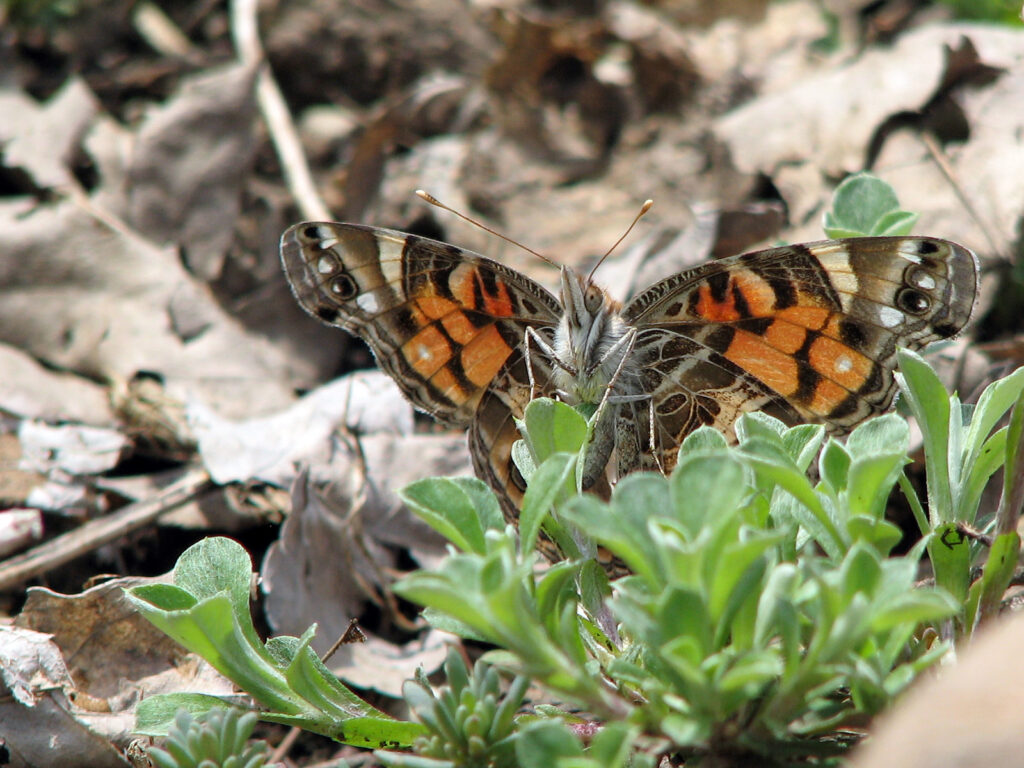
The American lady butterfly in the photo above is laying an egg on pussytoes (Antennaria), one of its host plants. This photo shows it closeup.
The other host plant for American ladies we grow is pearly everlasting (Anaphalis margaritacea).
Both of these host plants have a whitish hairy coating. This American lady caterpillar protects itself in a little structure it creates (a “larval nest”) using the whitish fuzz of its host plant leaves.
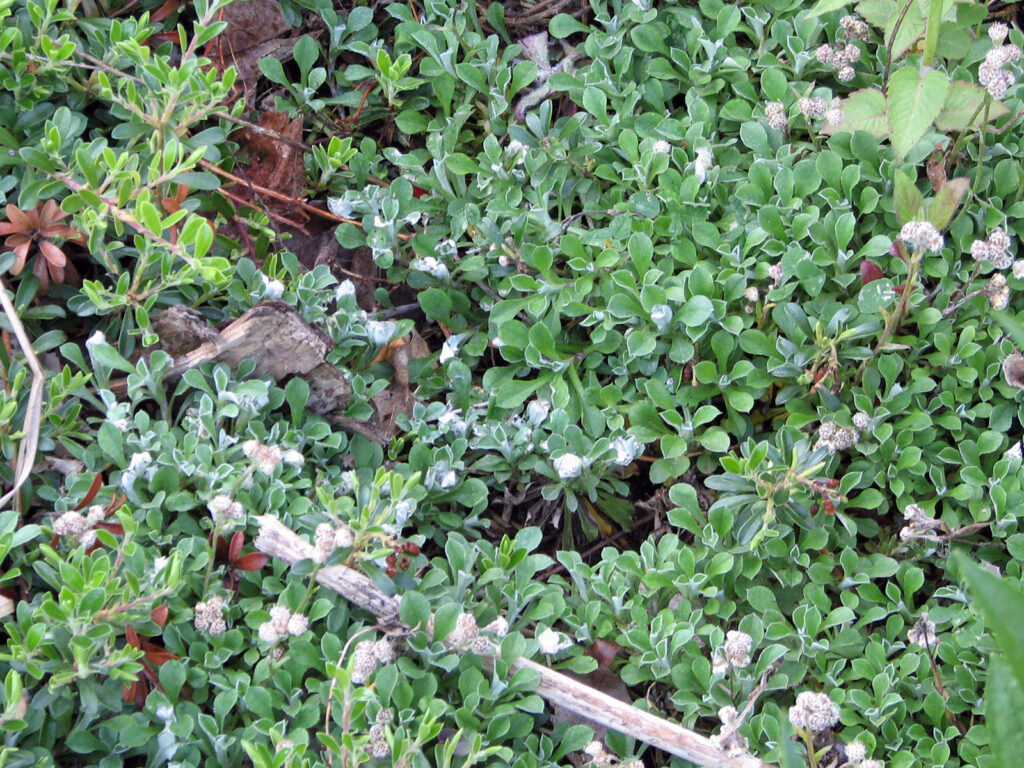
For years, we had an abundance of American Lady caterpillars, all in their little white larval nests.
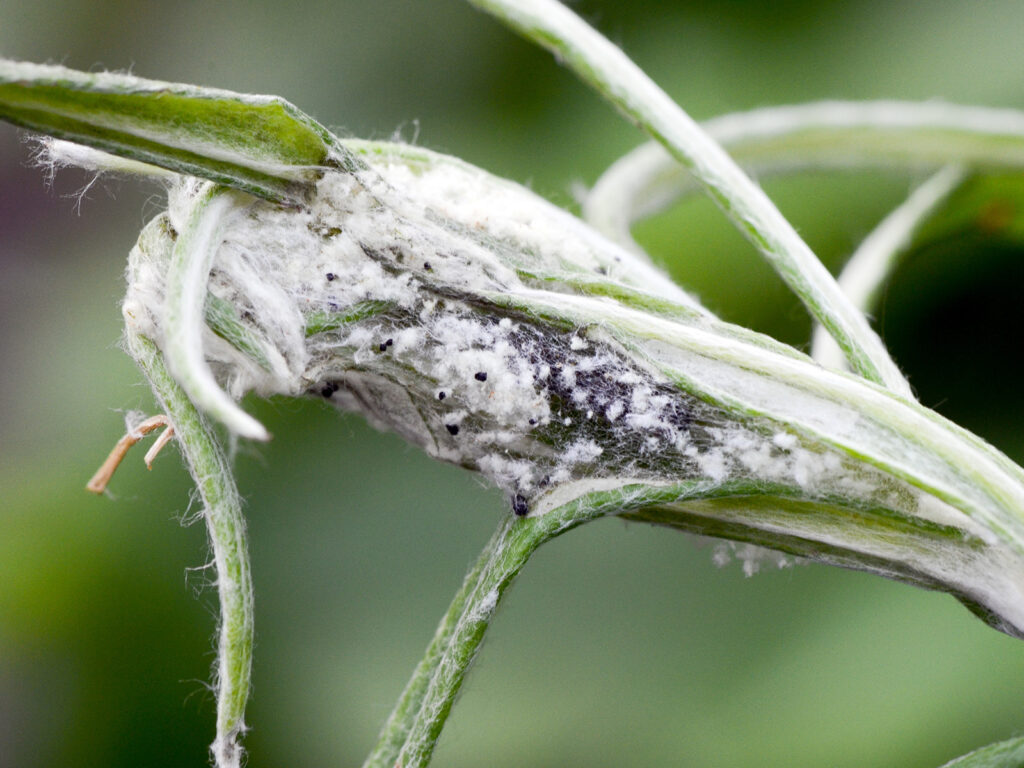
Raising them inside
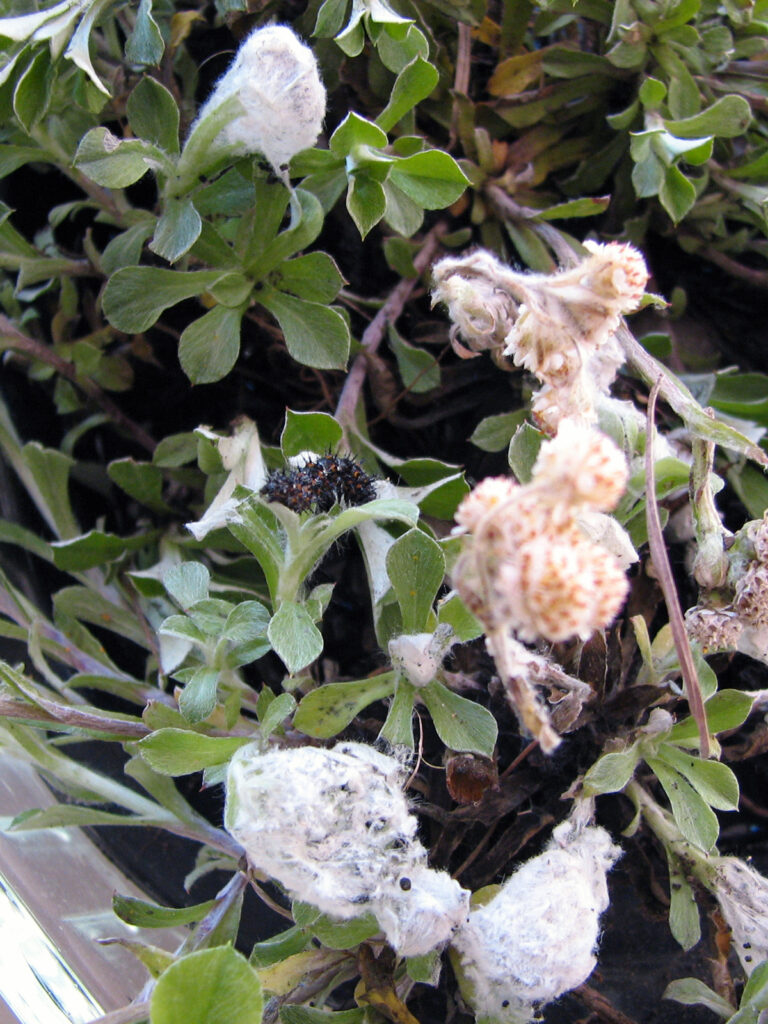
I find it’s easiest to pot up pearly everlasting plants for food when I raise these butterflies inside. Pussytoes is hard to harvest or to pot up in sufficient quantities.
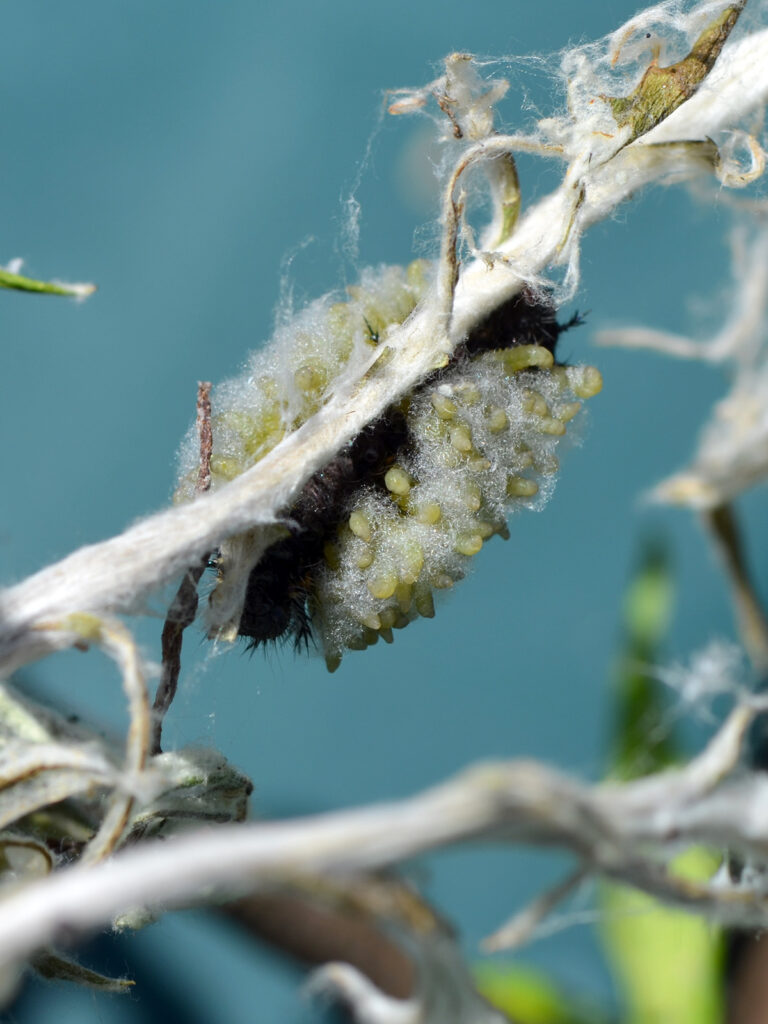
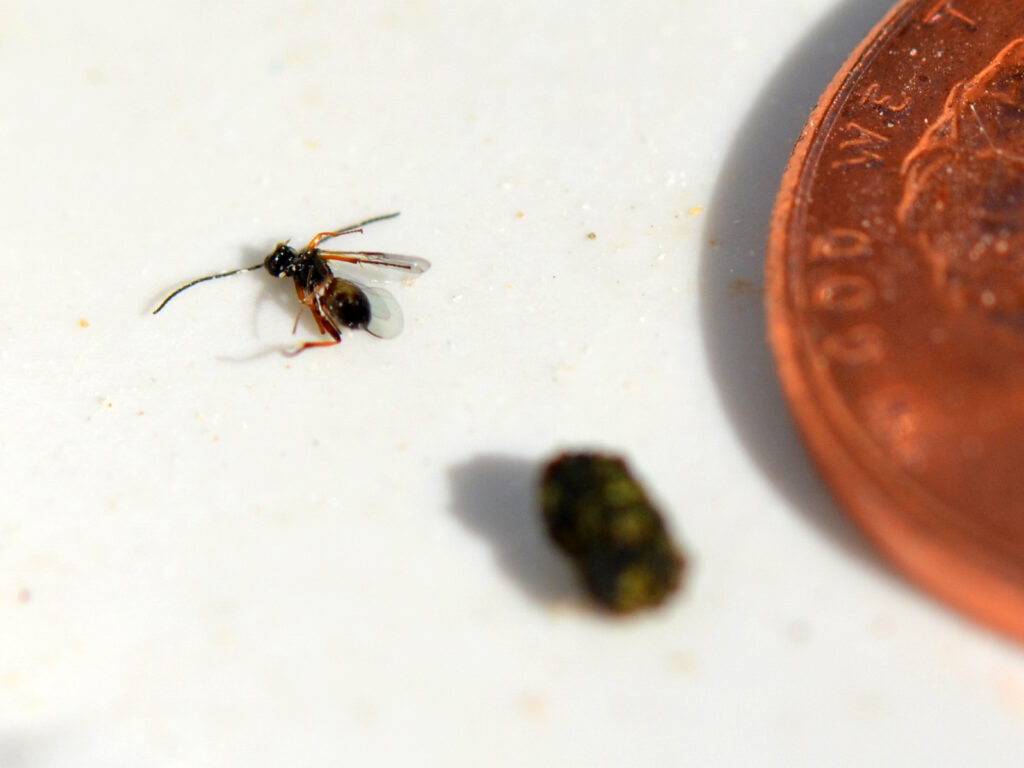
This caterpillar has been parasitized. You can see the dozens of pupae feeding off the caterpillar. The parasitic wasp on the right is what they turned into.
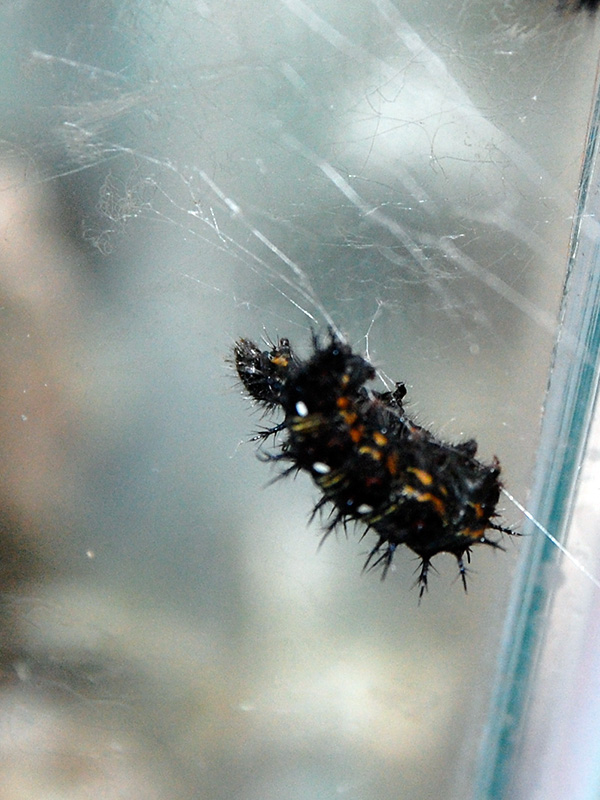
This caterpillar, which has left its first enclosure, is creating an enclosure for itself in the corner of the aquarium by using its silky strands.
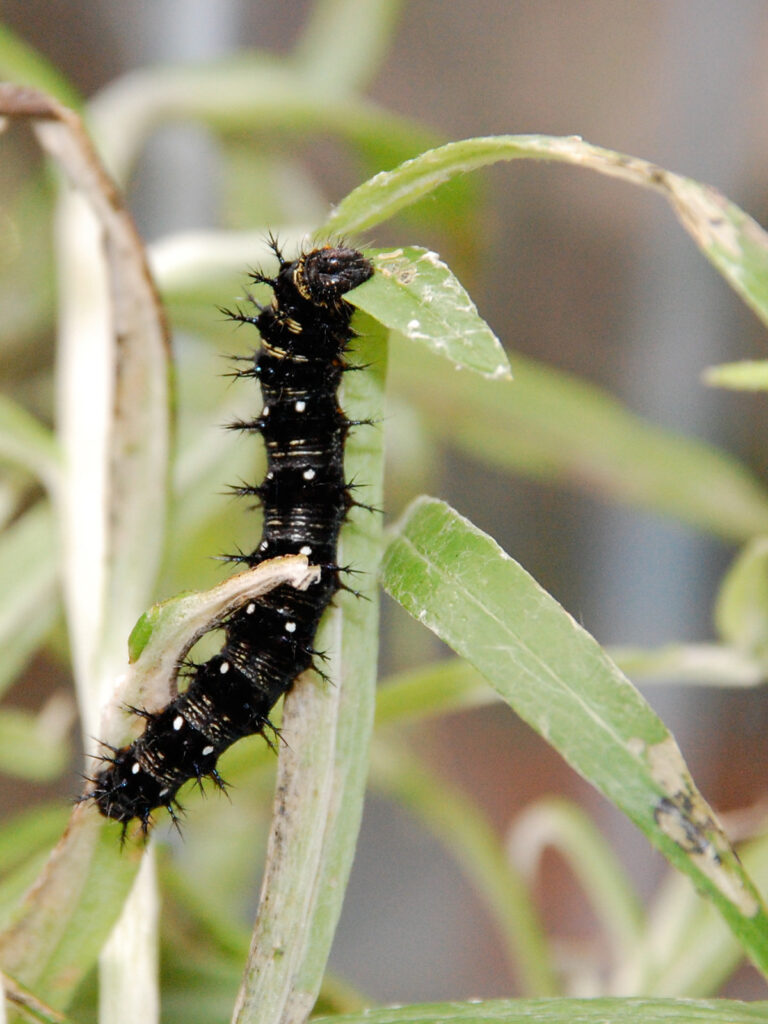
This is probably the last instar (stage) of the caterpillar before it becomes a pupa. It’s eating its host plant leaf, in this case, pearly everlasting.
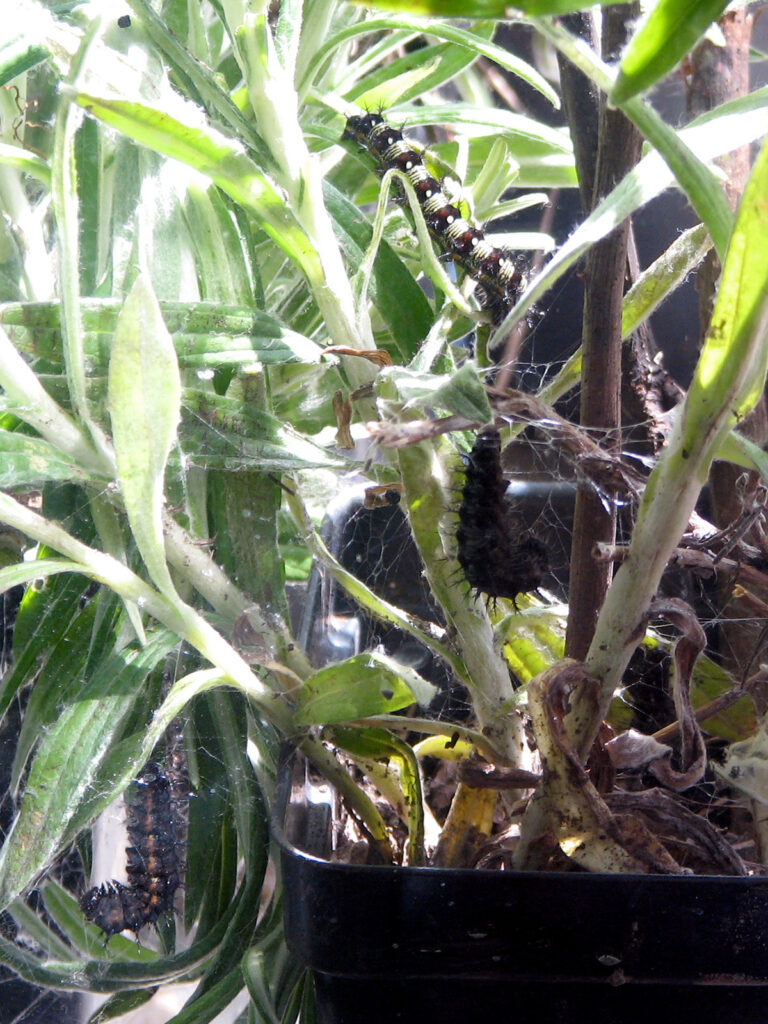
These two American lady caterpillars (at the center and at the bottom left) are hanging in a “j”-shape just like monarch caterpillars. They’ll soon be pupating.
You can also see a large caterpillar near the center top
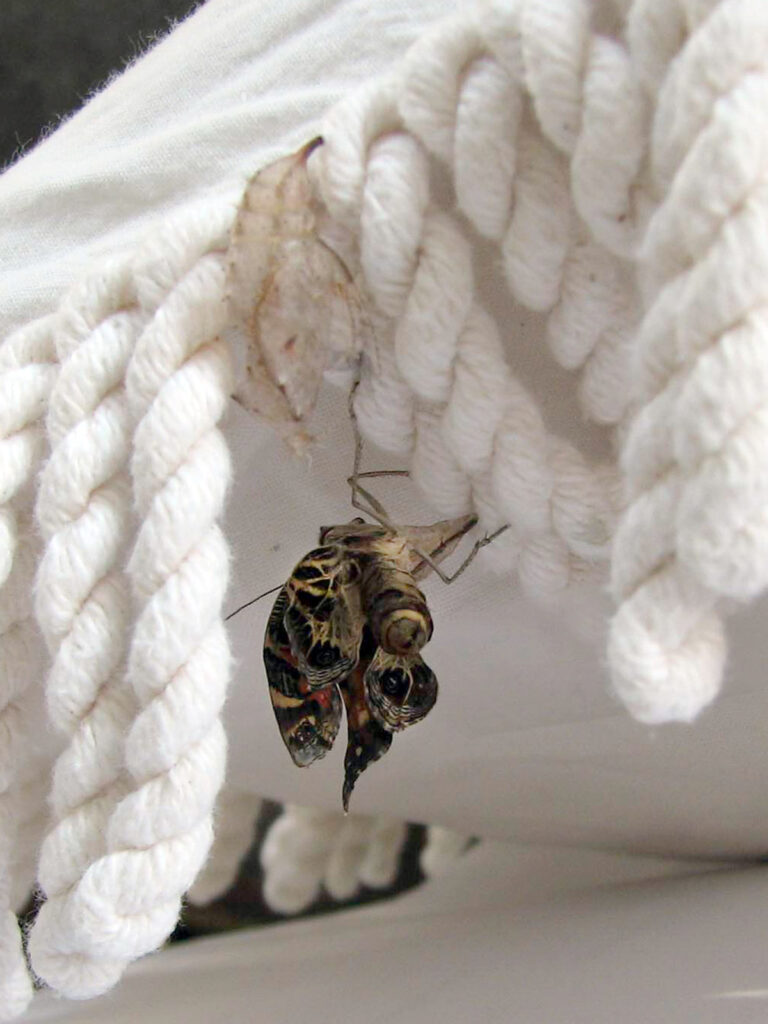
Oops! I was raising them in an aquarium, but I didn’t have a lid on it. Why would I need to? Obviously everything they needed — their host plant leaves — was right there in the aquarium.
I didn’t yet know that when they’re getting ready to pupate, they (and other species’ caterpillars) become very restless and travel quite far from their host plant to pupate.
This makes sense. I’m guessing that predators would be looking for host plants to find such tasty morsels. This caterpillar and a few others escaped from the aquarium, and I found them attached to bookcases, our gas heating stove, and other places. Fortunately, they weren’t anywhere where it was a problem to leave them, so they all emerged successfully. But I learned that I need to keep a lid on the top!
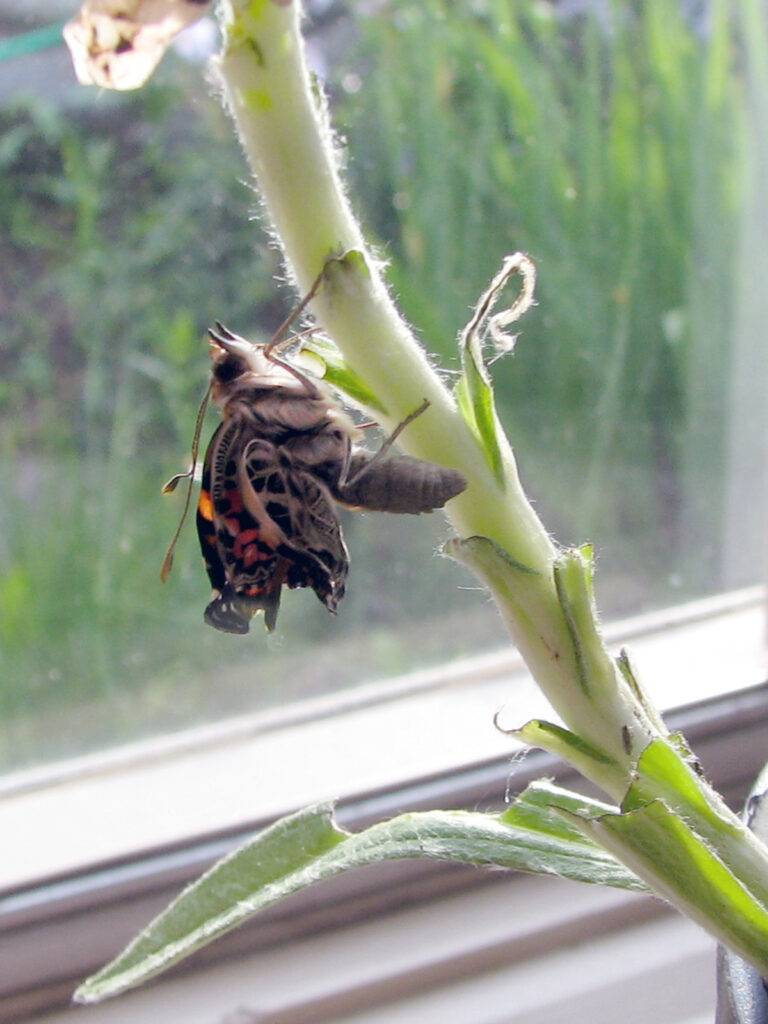
This American lady butterfly has just emerged.
The adult butterfly
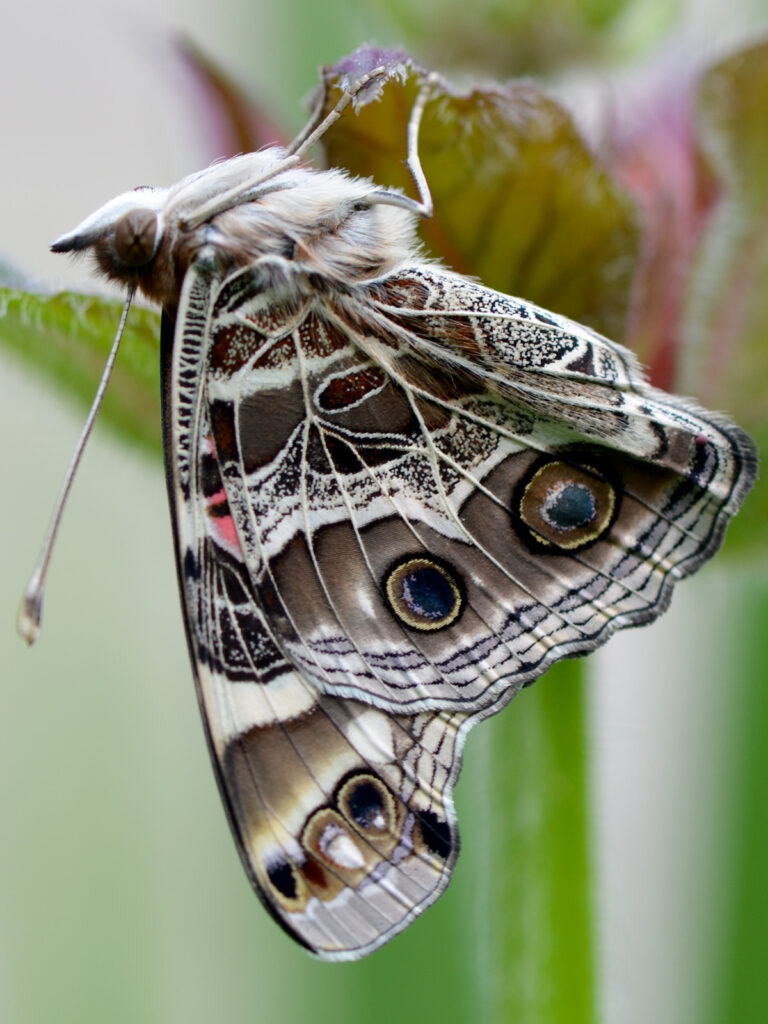
This is an American lady with its wings closed. They always remind me of stained glass windows.
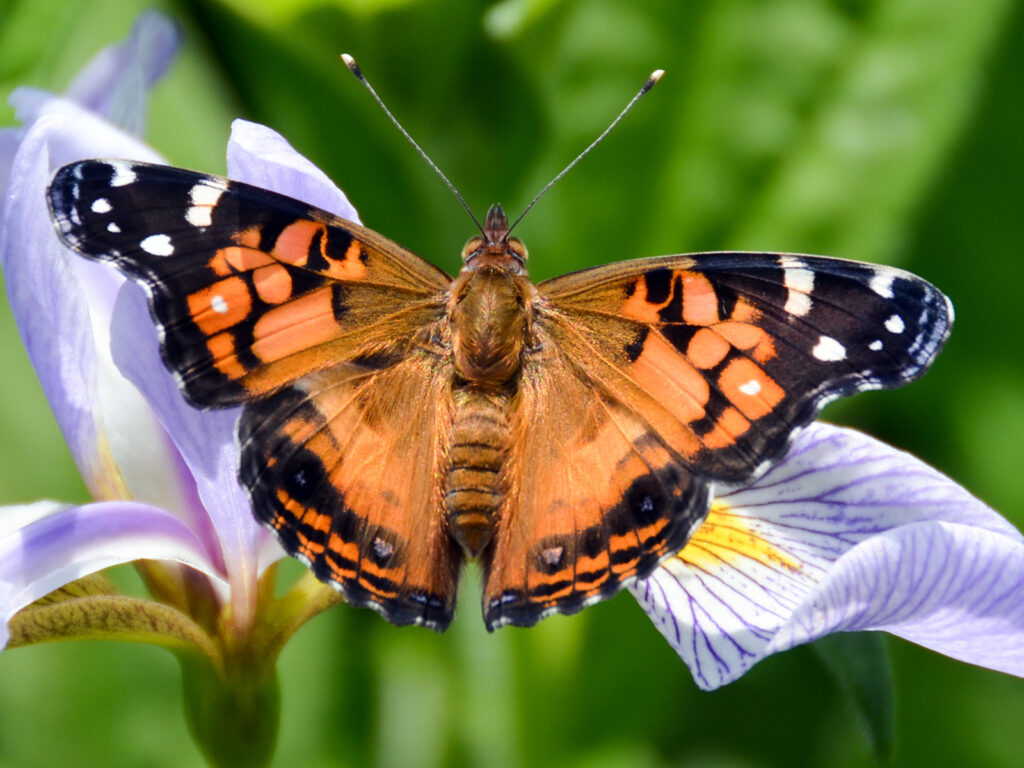
With its wings open, it’s hard to believe that it’s the same butterfly!
Reflections
Beautiful and graceful, varied and enchanting, small but approachable, butterflies lead you to the sunny side of life. And everyone deserves a little sunshine.
~ Jeffrey Glassberg
